






























Tiger Moth 90th Anniversary Fly-in, Brakpan
By Russell Dixon-Paver

He then designed and built another petrol engine while at Williams and Robinson of Rugby, later working at the Wolseley Tool and Motor Car Company and the Motor Omnibus Construction Company. At this latter company, he met Frank T Hearle, who worked for the Vanguard Omnibus Company, Geoffrey and Frank both developed an interest in the new-found sport of aviating. With the tone of Geoffrey's career path thus firmly set, he decided he wanted to build his own aeroplane. His grandfather advanced him 1000 Pounds for the project, his bequest on his grandfather's death. He designed a new horizontally-opposed, water cooled four-cylinder engine that was built by the Iris Motor Company at a cost of 250 Pounds and he and Frank rented a workshop in Fulham to build the biplane with canard foreplane and rear stabilizer. The first flight at Seven barrows on the Hampshire Downs in December 1908 ended badly when the port wings spar failed. Fortunately, Geoffrey was not injured and a second aeroplane was built, using lessons learnt from the first failure and flew again at Seven Barrows on 10 September 1910. The War Office bought the aircraft for 400 Pounds and Geoffrey obtained his Royal Aero Club Aviator's Certificate (No. 53) on 7 February 1911 at Farnborough, where the aircraft was called the FE1 (Farman Experimental). This aircraft crashed on 15 August 1911.
Geoffrey joined the Army Aircraft Factory at Farnborough and this became the Royal Aircraft Establishment and later the British Aerospace Establishment. He joined the reserve Royal Flying Corps in 1912 as a 2nd Lieutenant. Shortly before the First World War, Geoffrey, by then a captain, was persuaded by George Holt Thomas to leave the Royal Aircraft Factory and join the Aircraft Manufacturing Company as Chief Designer, where he was responsible for the DH2 through to the DH9 during the war.
After the war, there were cut-backs and various changes of hands of companies took place and the de Havilland Aircraft Company was eventually formed on 25 September 1920. They set up at the Stag Lane site and times were really very difficult, but an important order came for a three-seat touring aircraft from Alan S Butler, who later invested in and became the Chairman of the company until 1950. Mr Butler led the company to great achievements leading towards the merger with Hawker Siddeley in 1960 and ultimately continuing into British Aerospace PLC. The company was saved from the ravages of the Depression years by the DH37 aircraft built in 1922.
Geoffrey de Havilland was knighted in 1944 for his services to aviation. A giant in terms of influence on the direction of aviation in the UK and indeed, the world!
Geoffrey had a vision to make aviation accessible to more people by the design of a simple and relatively inexpensive aircraft in the form of the DH51. He flew the prototype on 1 July 1924. There were difficulties with the certification of the RAF 1A and a Renault engine was modified by Major Halford to achieve certification, but due to the increased cost, only three DH51's were built. The last one built, which is the only remaining DH51, is at the Shuttleworth Collection registration G-EBIR and known as “Miss Kenya” because the original buyer was in Mombasa, having been restored in 1965.
Geoffrey designed a scaled-down version of the DH51, this being the DH60 “Moth”. Many of the de Havilland aircraft were named after moths as Captain de Havilland was a keen lepidologist. Again, Major Frank Halford designed a new engine for the DH60, based on some design elements of the old Renault engine. This became the Cirrus I upright 60hp engine. The DH60 was a biplane of fabric-covered spruce and plywood construction and had place for pilot and tandem passenger seating for two. She had folding wings, which were stressed for aerobatics and the folded width was 9' 8”, which saved hangar space and fees.
The DH60 Moth could cover 300 miles at cruise speed over 80 mph. Empty weight was 764lb and all up 1250lbs. Geoffrey de Havilland flew first one on 22 February 1925 at Stag Lane and twenty were built in 1925. DH60's were also built under license in Australia and Finland and were well known for being flown by Sir Francis Chichester from London to Sydney in 1929 & Amy Johnson in 1930. Various other engines were used - Cirrus II, III Hermes and Armstrong Siddely Gennet, while some DH60's were used by the RAF Central Flying school with the DH60G Gennet Moth. De Havilland wanted their own engine, because engine availability potentially limited the success of the DH60, when sales “took off” from 1926. Major Frank Halford was approached to develop de Havilland's own Gipsy 1 engine of 100hp for the new DH60G Gipsy Moth, which won the 1928 Kings Cup at 105mph and contributed greatly to de Havilland's popularity across the globe. They were manufactured under license in France and the USA. A DH60M Metal Moth with a welded steel tube fuselage frame, in place of the wooden frame, was 62lb heavier but less maintenance was required and it opened the way for more powerful engines in the form of the Gipsy II, which was an upright 120hp engine and then the Gipsy III, which was the first inverted format of 120hp. The Gipsy Major was also inverted and further developed to 130hp output. The inverted engine provided improved visibility for the pilot and a more streamlined cowling. With the Gipsy III engine fitted, the DH60 became known as the DH60G III Moth Major.
The DH60T was a development of the DH60M and was offered against Air Ministry specification which required full dual-controls for training as the new RAF trainer. The DH60T design remained difficult for the front seated instructor to exit the aircraft by parachute in an emergency and various modifications were made to flying wires, but it still remained a problem. The solution was to move the top wing forward, but this would alter the centre of pressure, so the top wing was swept back to compensate for this.
During September 1931, 90 years ago, changes to the design were made, including increased sweepback and dihedral on the lower wing and this modification prompted a new type number and the Tiger Moth was born, thus becoming the DH82!
Further development of the Gipsy III engine produced the 130HP Gipsy Major engine and other refinements to the design produced the DH82A Tiger Moth, which known world-wide as an excellent training aircraft.
The Tiger Moth was strong, reliable and an excellent trainer because you had to be a good pilot to fly it accurately - as stated by some of the period instructors. The first one flew on 26 October 1931. Initial production was at Stag Lane factory, which was moved to Hatfield in 1934 and again to Cowley, near Oxford, in 1941, to make way for production of the Mosquito at Hatfield. They were also produced in Toronto - Canada, Sydney - Australia, Rongotai near Wellington in New Zealand, Portugal, Norway and Sweden, forming the underpinnings of the Commonwealth Air Training Plan.
During WWII, there were 30 flying schools using Tiger Moths in the UK, another 55 in Canada, Australia, Rhodesia and South Africa. Tens of thousands of pilots trained 200 hours to receive their wings, before training conversion onto advanced trainers and operational types.
Over 8000 Tiger Moths were produced and many are still flying today, having been beautifully restored, not least, in South Africa. G-ACDC is apparently the oldest flying DH82A Tiger Moth and was built at Hatfield in 1933. She was the 3rd Production Tiger Moth.
Susan Prinsloo was a prime-mover in organising this well-run event to commemorate the 90th Anniversary of the Tiger Moth. Grant Timms assisted in getting arrangements finalised and in communicating to the various stakeholders. Keith Fryer was the safety officer for the day and his team of marshallers assisted pilots to park in an orderly fashion and ensure no one got near whirling propellers. Susan is the proud owner of the oldest Tiger Moth in attendance - ZS-BGL. There was a great welcoming atmosphere around the Brakpan Aero Club clubhouse and a scrumptious breakfast with plenty of hydration was available to deal with a very warm day.

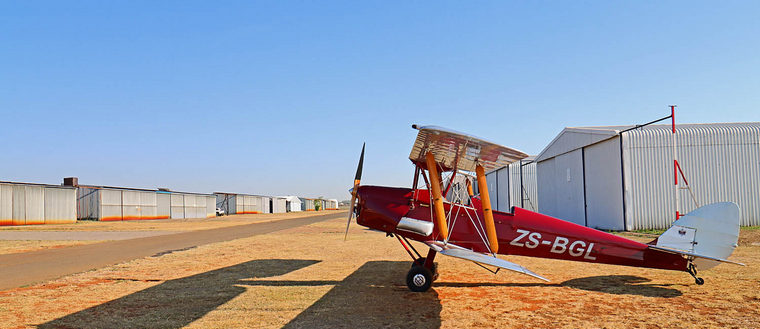
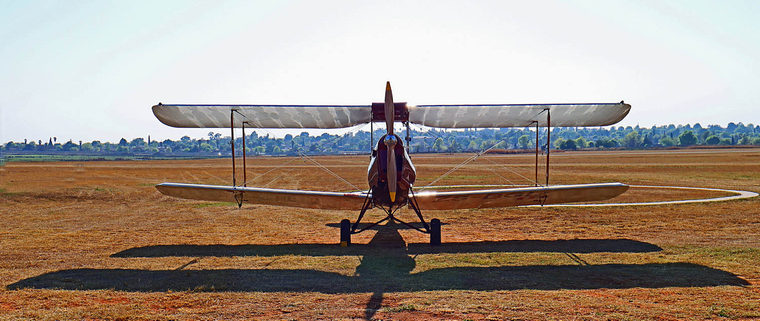
ZS-BGL in natural habitat - marking the start of the line where visiting Tiger Moths were parked. Drawing the visiting Moths to the light.
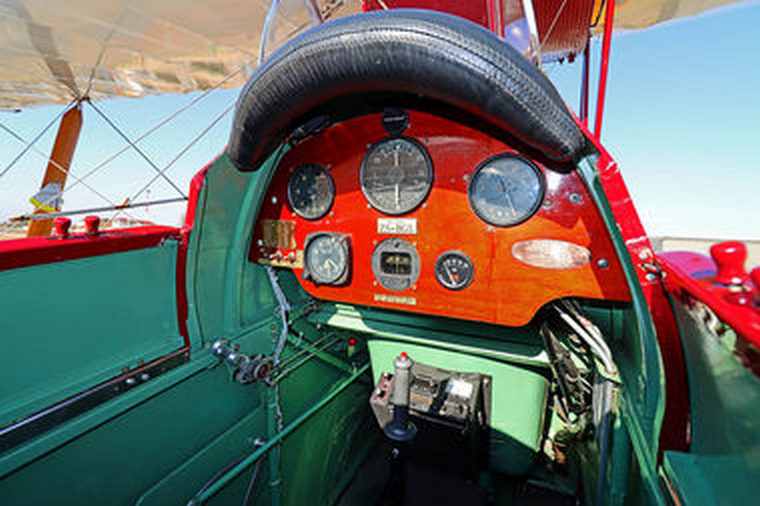
ZS-BGL instruments.
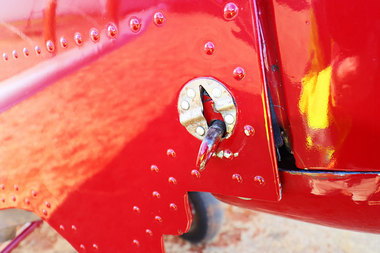
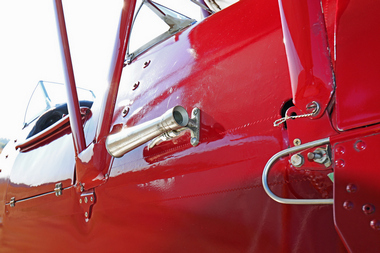
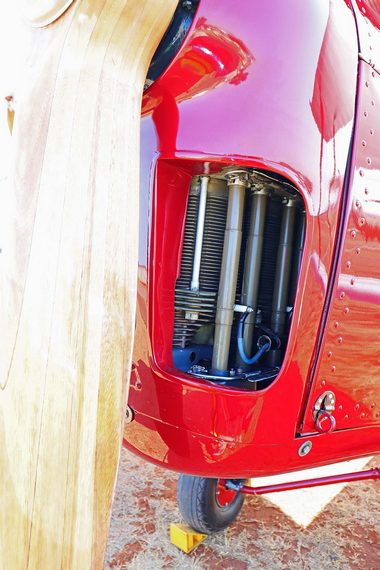
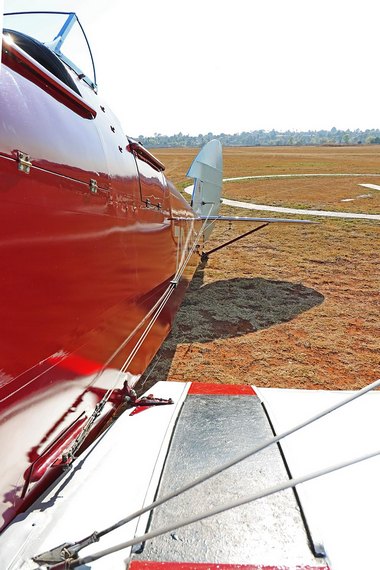
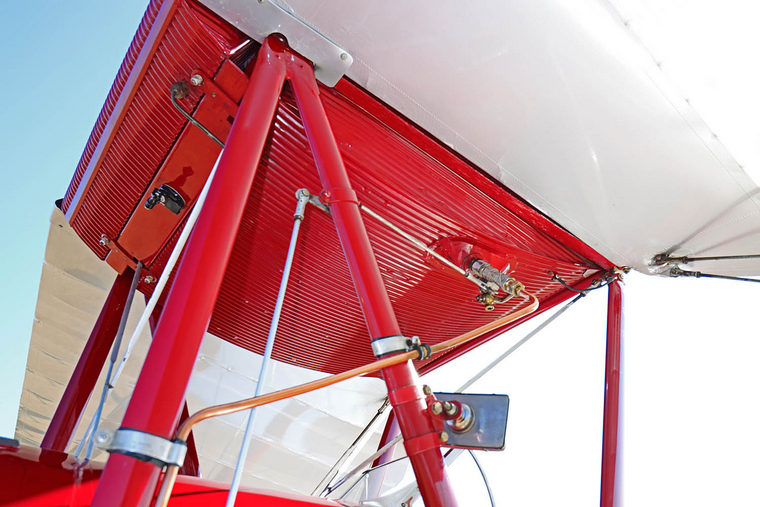
Some typical Tiger Moth design details.
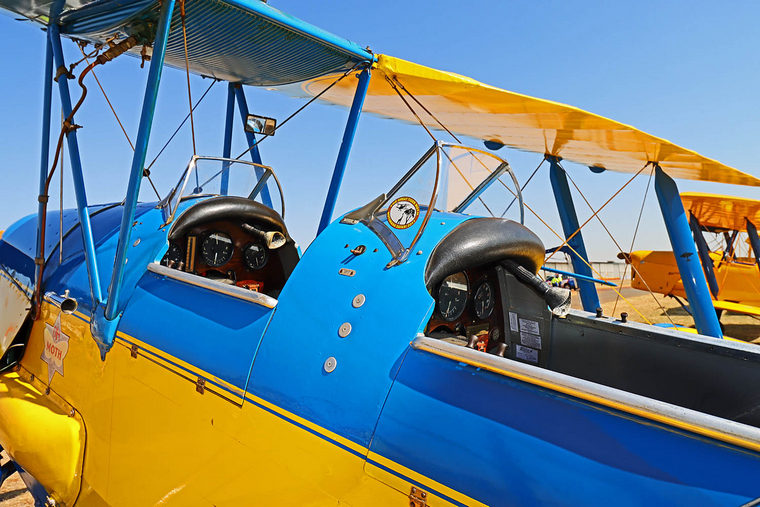
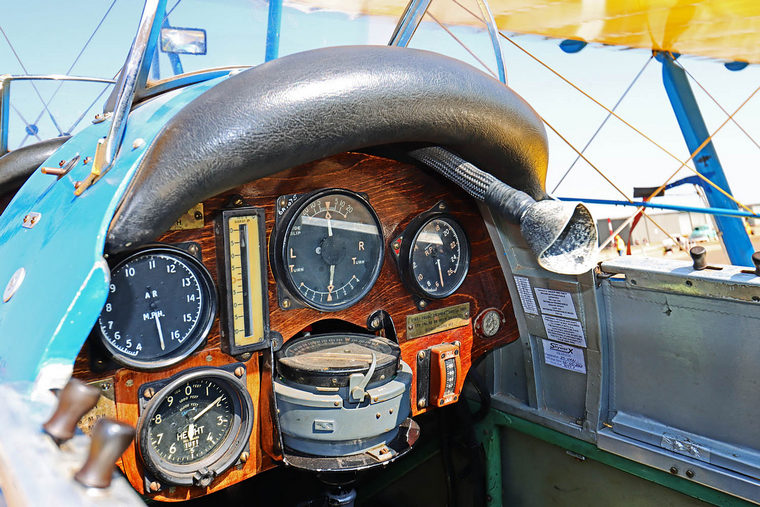
Intercom between cockpits 1930's style - the Gosport Tube.

The Springs team arrive overhead in formation.
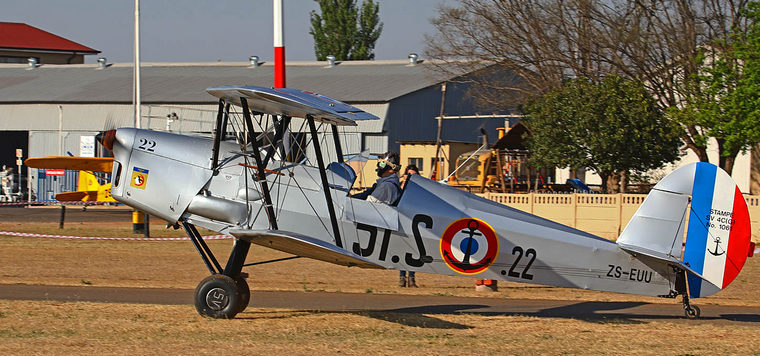
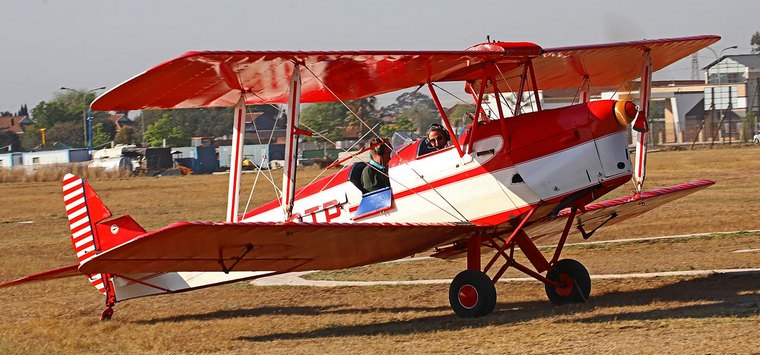
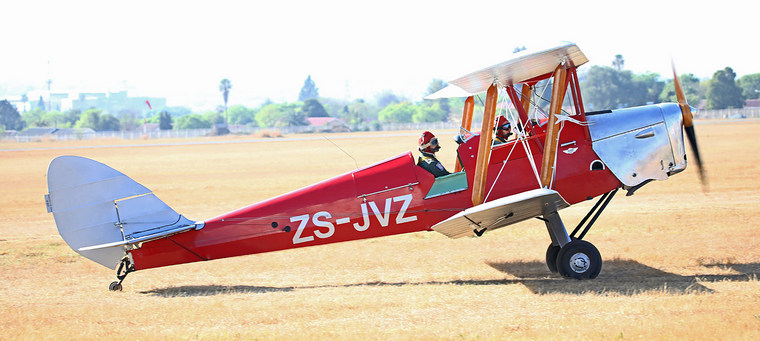
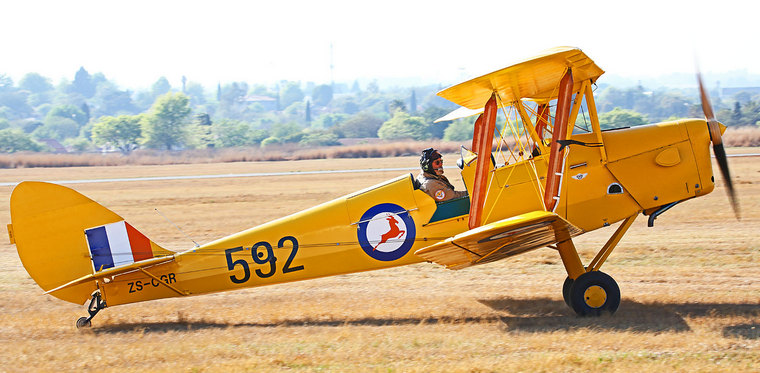
Three Tiger Moths and the Stampe, which was regarded as an “honorary Tiger” from Springs arrivals.
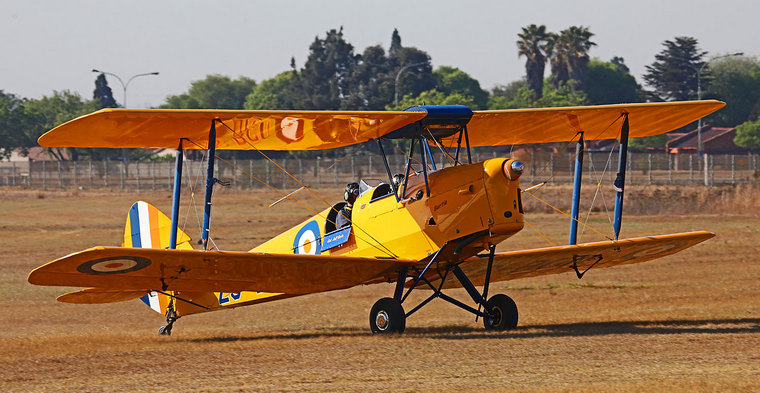
Jeff Earle taxis to the designated "Tiger Moth Line".
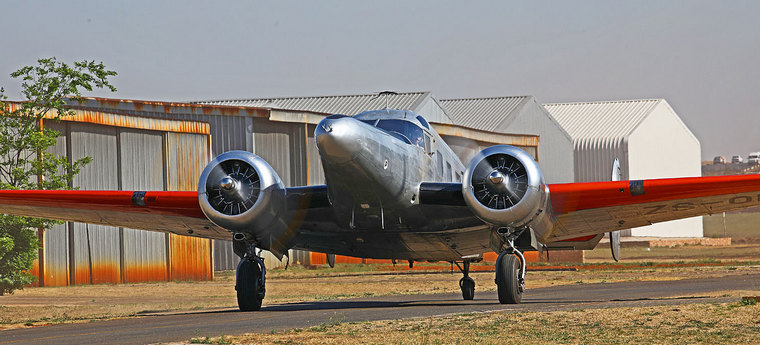
Flippie Vermuelen arrives with the Beech 18.
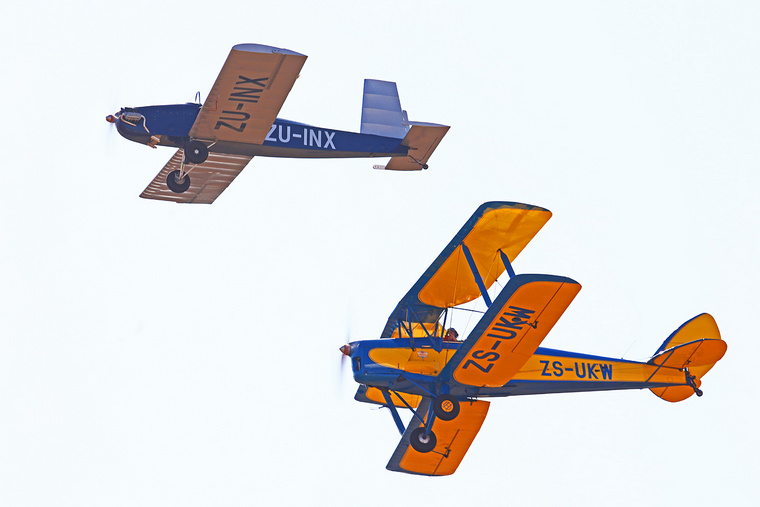
Two more Krugersdorp arrivals overhead.
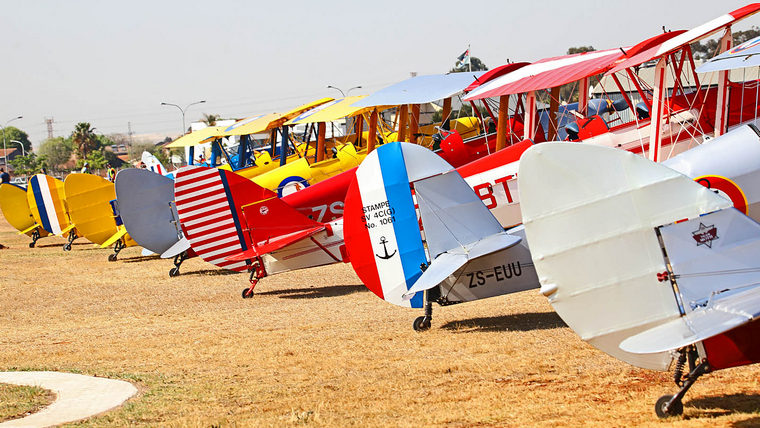
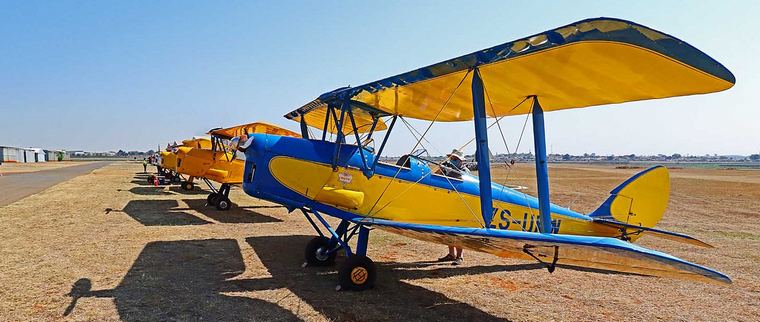
Six Tiger Moths and a Stampe - Seven Tiger Noses and Tails in line with props dressed. After a short rest, a pilot briefing was held for a seven-ship formation fly-past over the main runway. A “mass start” - within the limitations of hand starting, was then done before the “Tiger Formation” headed for the threshold for take-off and form-up.
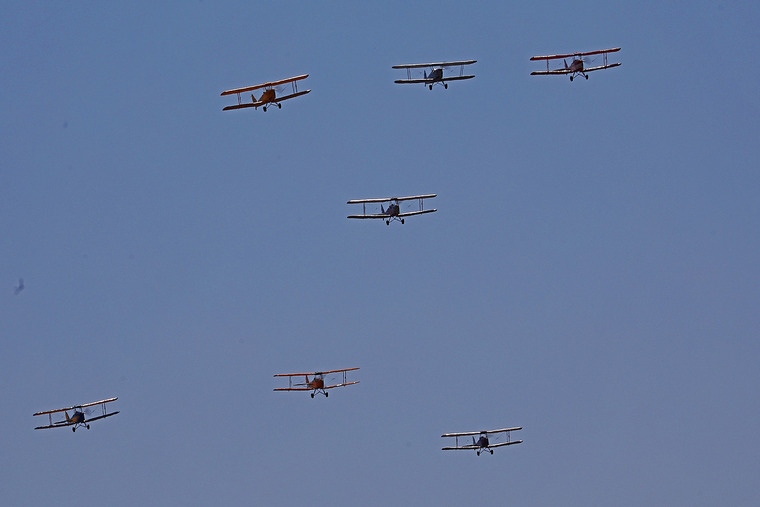
The seven-ship "Tiger Formation". After this, the four Springs machines broke away to return to Springs, while the other three landed.
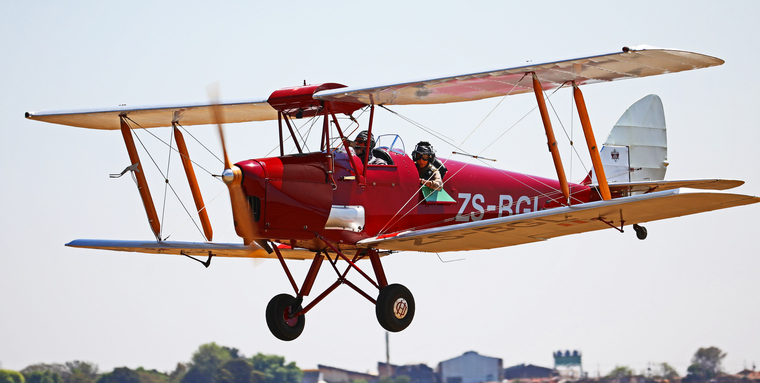
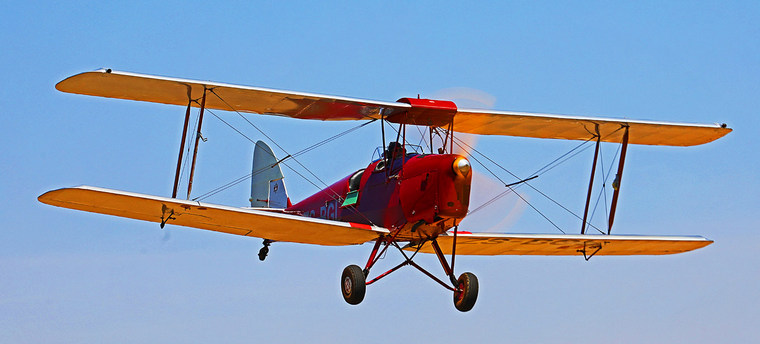
ZS-BGL completed a flypast each way down the grass runway before the remaining three Tiger Moths landed back at Brakpan.
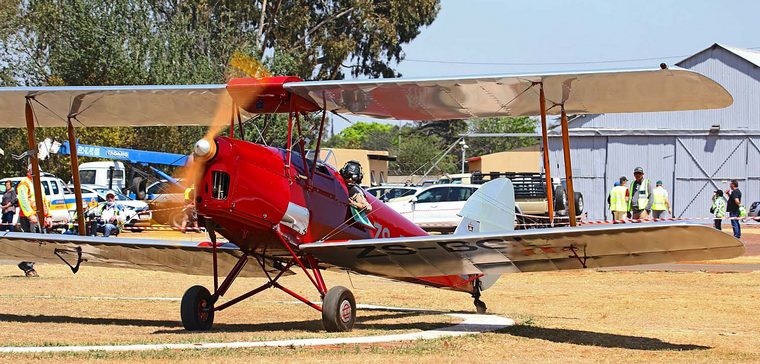
Susan concentrates on turning ZS-BGL into its parking spot to complete the formal side of the 90th Anniversary of Tiger Moth.
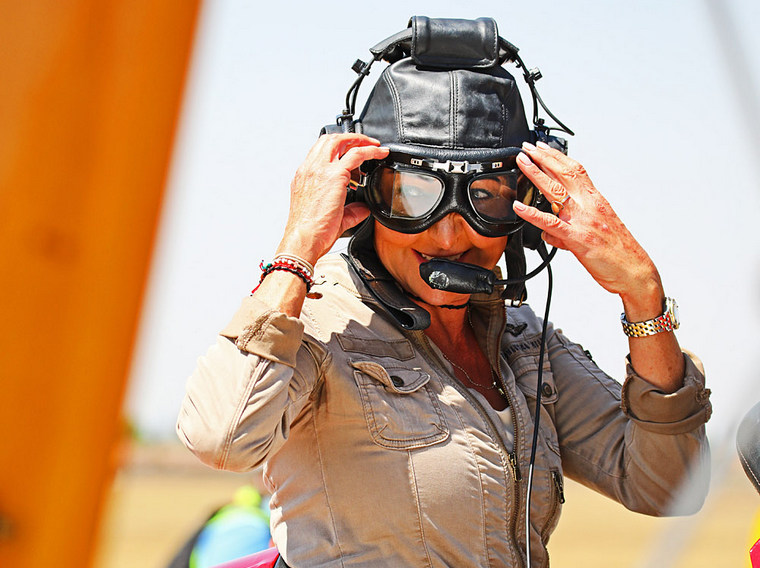
Susan was interviewed for TV and posed for some footage.
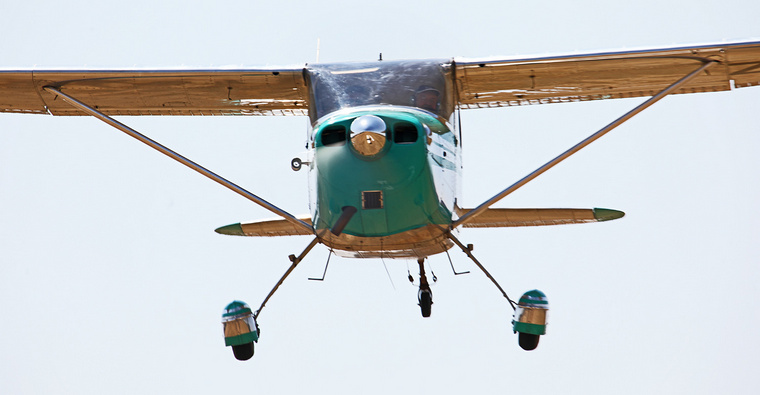
Karl Jensen makes his customary flypast as he leaves having, as is his practice, supported the event.
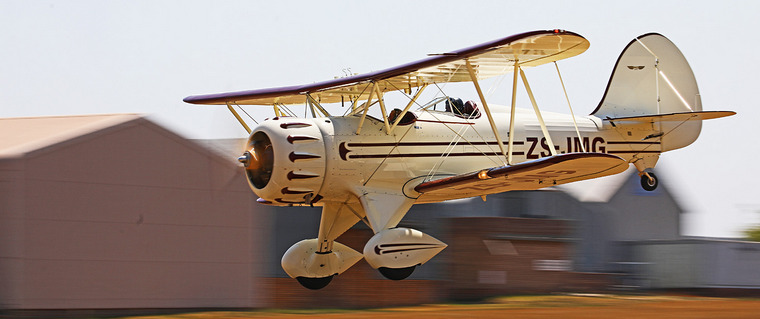
Nico van Staden heads back to Rand giving a young man a taste of aviation passion in his immaculate Waco - those big radial sounds so relaxed as it hauls this big biplane around the sky.
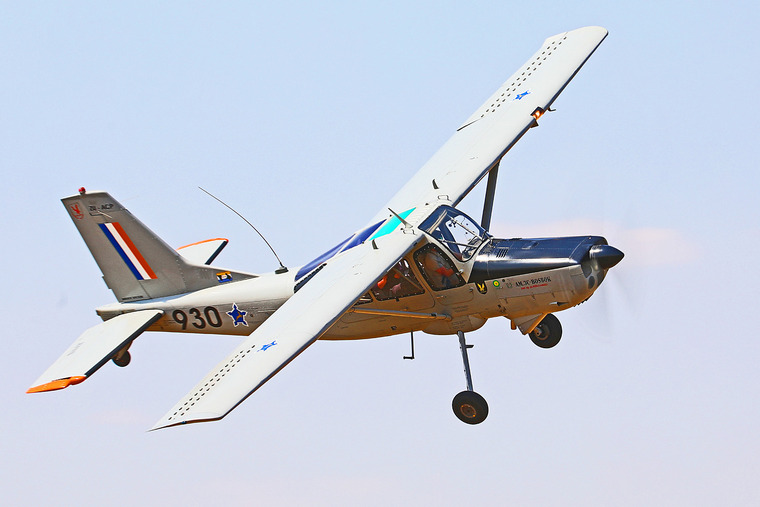
Grant Timms took Keith Fryer for a flight in the Bosbok.
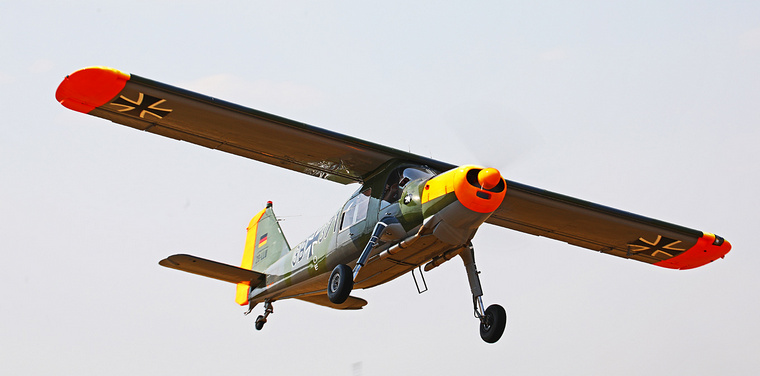
Finally the Dornier flew by to complete they proceedings.
Pilots Post thanks the organisers and those who officiated and worked hard behind the scenes to make a successful and enjoyable event for pilots, classic car and aviation nuts.
www.youtube.com/channel/UCCuRVZAGodT6sztTeXBGeMw
and subscribe to our YouTube channel

 |
 |
 Copyright © 2024 Pilot's Post PTY Ltd
The information, views and opinions by the authors contributing to Pilot’s Post are not necessarily those of the editor or other writers at Pilot’s Post.
Copyright © 2024 Pilot's Post PTY Ltd
The information, views and opinions by the authors contributing to Pilot’s Post are not necessarily those of the editor or other writers at Pilot’s Post.